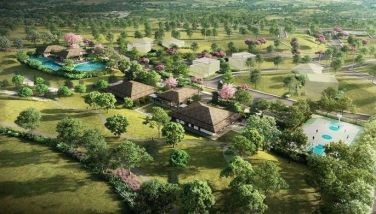Predicting soil erosion in small upland watersheds
July 11, 2004 | 12:00am
Several studies have been done in the past to determine soil erosion rates in the upland watersheds in the country. Some were through direct measurement and others were through the use of traditional methods of estimating soil erosion such as the Universal Soil Loss Equation (USLE). Although direct measurement of soil erosion can be used as a gauge in determining the impacts of upland watershed management practices, it is time-consuming, costly, and requires labor force in the area.
On the other hand, using computer simulation models such as the WEPP in estimating and predicting rates of soil erosion and sediment yield can save much time and finances. Unlike the USLE or its modified versions, the WEPP model is capable of predicting soil erosion and sediment yield either on a hill slope or watershed scale.
In 2001, the application of the WEPP Model in the upland watersheds in the Philippines was initiated through the Sustainable Agriculture and Natural Resources Management-Collaborative Research Support Program (SANREM-CRSP) Environmental Research Grant Program (ERGP). Dr. Victor B. Ella of the College of Engineering and Agro-Industrial Technology (CEAT), University of the Philippines Los Baños (UPLB) led the project. The Philippine Council for Agriculture, Forestry and Natural Resources Research and Development (PCARRD) acted as the coordinating council for the SANREM-CRSP projects.
The WEPP model was tested on the subwatersheds of the Manupali river basin in Bukidnon. Results showed the applicability of the WEPP model for simulating and predicting soil erosion and sediment yield in small upland watersheds in the country. However, the availability of more recent and accurate data could further improve the developed WEPP models for the selected watersheds. – Vella A. Atienza, S & T Media Service
On the other hand, using computer simulation models such as the WEPP in estimating and predicting rates of soil erosion and sediment yield can save much time and finances. Unlike the USLE or its modified versions, the WEPP model is capable of predicting soil erosion and sediment yield either on a hill slope or watershed scale.
In 2001, the application of the WEPP Model in the upland watersheds in the Philippines was initiated through the Sustainable Agriculture and Natural Resources Management-Collaborative Research Support Program (SANREM-CRSP) Environmental Research Grant Program (ERGP). Dr. Victor B. Ella of the College of Engineering and Agro-Industrial Technology (CEAT), University of the Philippines Los Baños (UPLB) led the project. The Philippine Council for Agriculture, Forestry and Natural Resources Research and Development (PCARRD) acted as the coordinating council for the SANREM-CRSP projects.
The WEPP model was tested on the subwatersheds of the Manupali river basin in Bukidnon. Results showed the applicability of the WEPP model for simulating and predicting soil erosion and sediment yield in small upland watersheds in the country. However, the availability of more recent and accurate data could further improve the developed WEPP models for the selected watersheds. – Vella A. Atienza, S & T Media Service
BrandSpace Articles
<
>
- Latest
Latest
Latest
October 23, 2024 - 9:30am
By May Dedicatoria | October 23, 2024 - 9:30am
October 11, 2024 - 3:45pm
October 11, 2024 - 3:45pm
October 10, 2024 - 11:30am
October 10, 2024 - 11:30am
October 5, 2024 - 12:08pm
October 5, 2024 - 12:08pm
September 24, 2024 - 1:00pm
September 24, 2024 - 1:00pm
September 13, 2024 - 4:00pm
September 13, 2024 - 4:00pm
Recommended





























